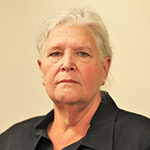QC-based IMEG offers engineering expertise to Times Square’s ball drop
QCBJ News Staff

The Quad Cities continued to record slightly lower inflation than the national average as its gross domestic product (GDP) grew by 2.1% in the second quarter, fueling cautious optimism for the future.
That’s according to the recently released Quad Cities Chambers’ Q2 Market Report and summary by Bill Polley, director of business intelligence for the chamber. It also suggests…

Get immediate, unlimited access to all subscriber content and much more.
Learn more in our subscriber FAQ.
Do you want to read and share this article without a paywall?
